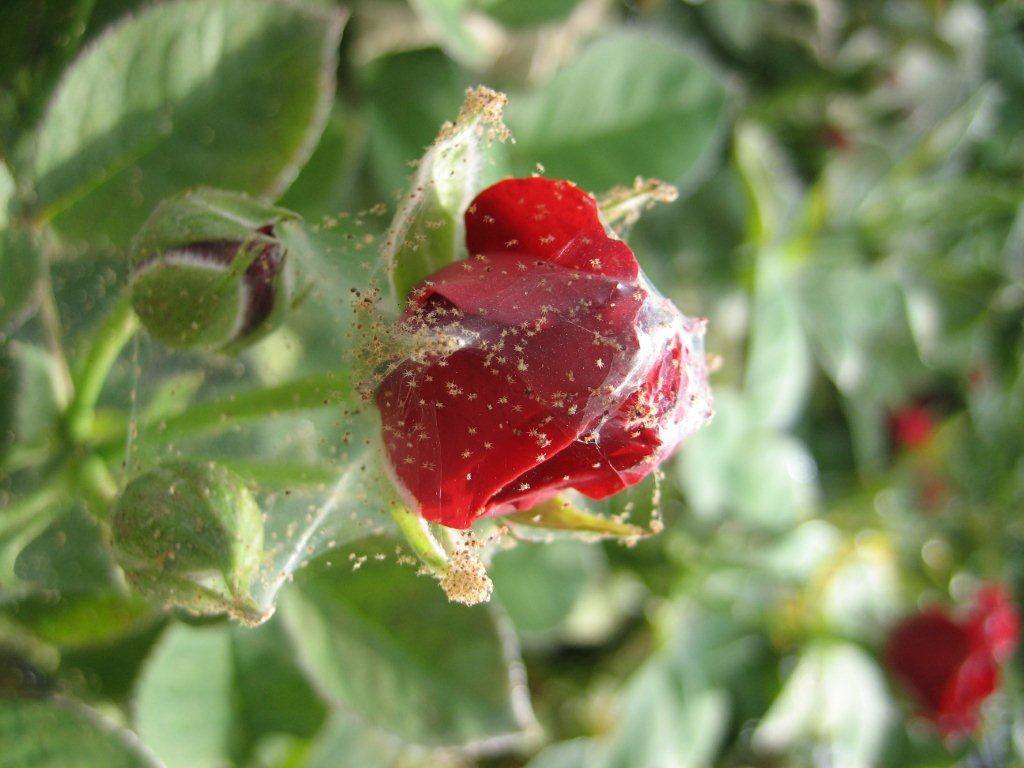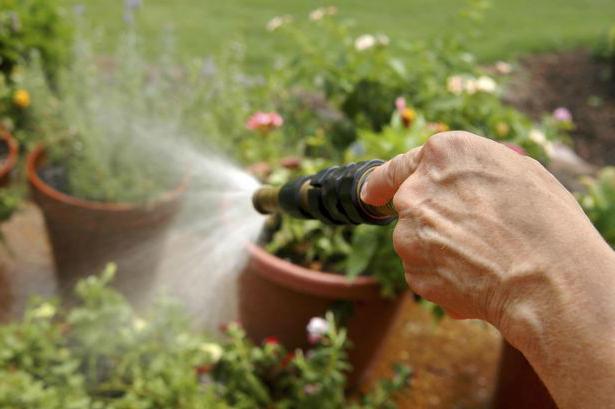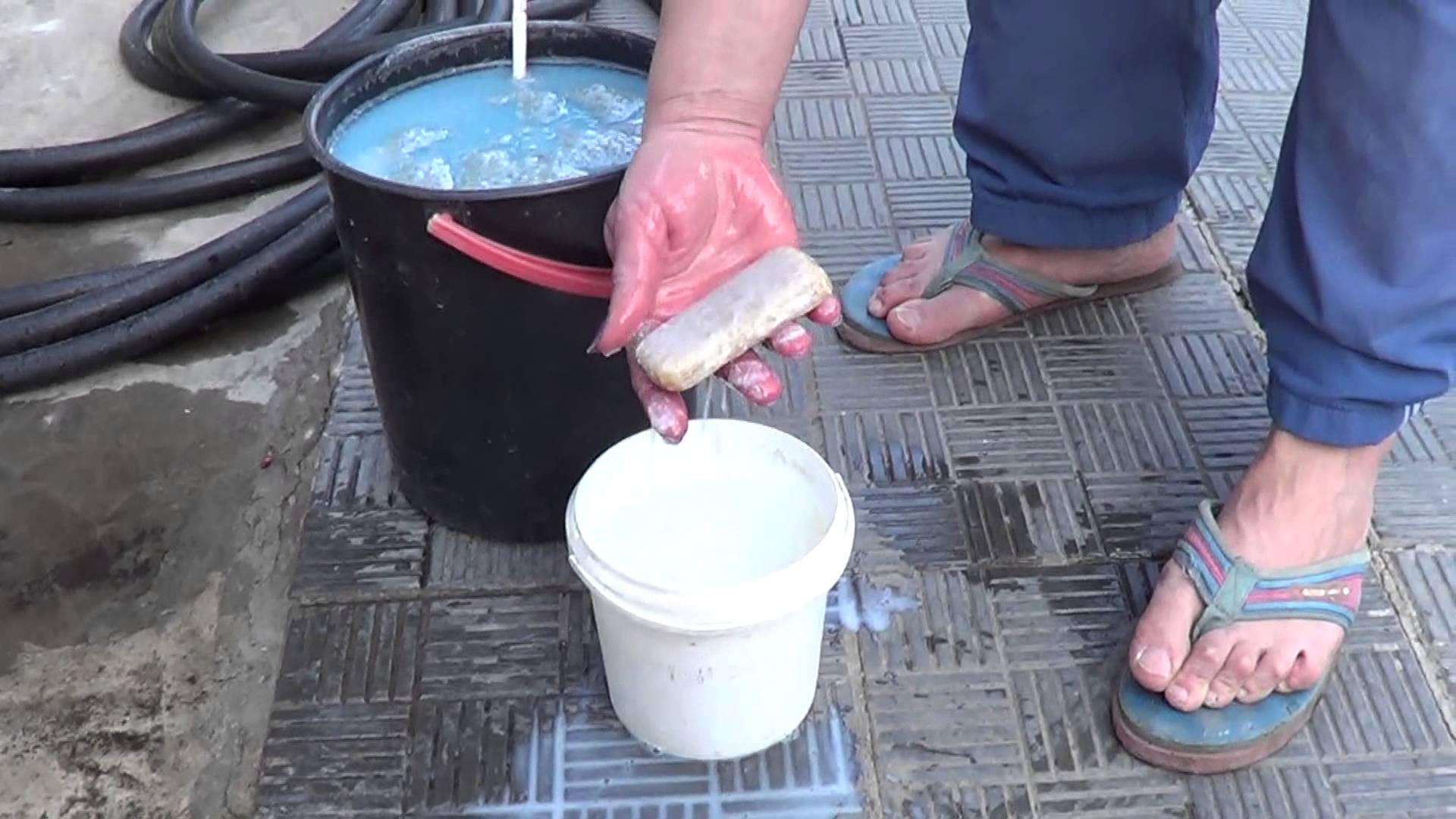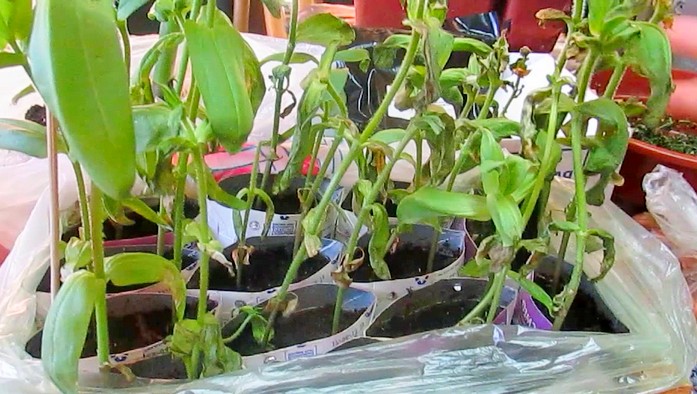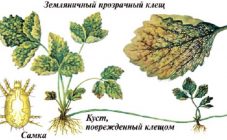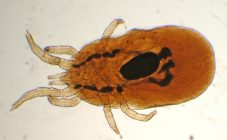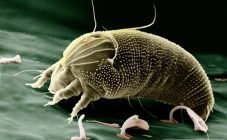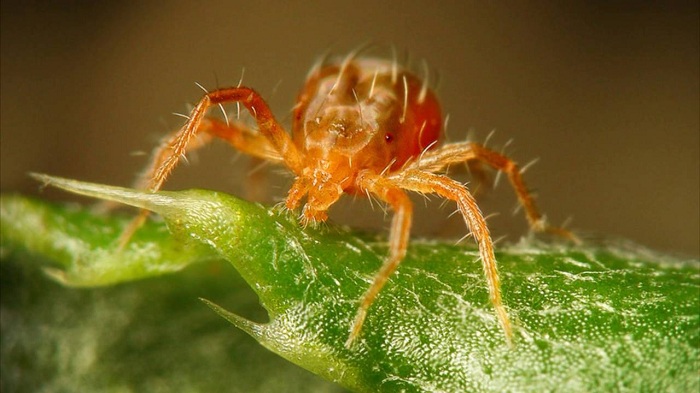Content:
There are many plant pests. The spider mite is considered the most malicious. This small arachnid arthropod is very common. Both indoor and garden plants suffer from it. From the publication, the reader learns what a spider mite is on roses, how to deal with it.
Description of the pest
This small pest loves to feast on the rose most of all. Moreover, regardless of whether the rose grows as a bush or twists in a whip along the wall, this plant is the favorite habitat of the spider mite. The leaves of a rose affected by a tick begin to turn yellow, dry, the plant loses moisture, depletes and withers.
The spider mite is very small in size. You can see it only with the help of magnification, for example, use a magnifying glass.
These pests settle in large groups, each of which contains more than a hundred individuals. The first sign of the presence of parasites on a rose is a thin cobweb on the underside of the leaves. Adults hide under it, laying eggs. Gradually, the colony spreads over the entire surface of the leaf.
An adult spider mite has an oval-shaped body and four pairs of legs. The larvae have three pairs of them. The average size of the parasite is about 0.5 mm. Moreover, females have a size of 0.4-0.6 mm, males - no more than 0.4 mm. Spider mites have a soft cover. The body is flat below, slightly convex above. In the larval stage, the insects are almost transparent. Over time, they acquire a pale greenish or greenish brown hue. There are dark spots on the sides. In wintering females, from autumn to spring, the color is red or bright red.
Features of the life of spider mites
Ticks feed on plant sap, which is sucked from green leaves and stems. In the summer, it is quite difficult to deal with this pest, since it is difficult to process all the greens in a summer cottage with high quality. But in the fall, you need to remove fallen leaves from the territory, since this is an excellent place for the wintering of ticks.
In spring, with the first warm rays of the sun, the mites wake up and actively attack young plants. This pest is very voracious and multiplies quickly. Spider mite larvae, in the presence of an abundant amount of food, become an adult in a very short period of time. By the summer, the tick colony is already impressive in size.
Causes of rose infestation
One of the reasons for the appearance of spider mites on roses is the wind. In dry weather, ticks are transferred from one plant to another, spreading throughout the garden plot. If a rose is weakened or not properly looked after, then first of all it is on it that the spider mite will settle.
Cold weather is fatal for the tick. He's also afraid of rain.Birds also help fight the pest, for which the tick is an excellent treat. However, this only slightly reduces the insect population. For a complete solution to the problem, these factors are not enough.
When growing indoor roses, some growers mistakenly believe that a dry and warm microclimate will be favorable for plants. This opinion is fundamentally wrong. These conditions are the main cause of indoor rose infestation. Dry air is an ideal breeding ground for spider mites. The tick does not tolerate a humid environment.
The result of the activity of a spider mite
If the number of spider mites is small, then it does not do much harm to the rose. However, under favorable conditions, the mite colony grows rapidly and harms the plant. Larvae and adults, biting through a leaf, feed on plant juices, as a result, the plant begins to wilt. Black spots appear on the leaves, the foliage turns yellow, dries and falls off.
A cobweb appeared on a rose: what to do at home
There are two main methods of dealing with bugs:
- chemicals;
- folk remedies.
The choice depends on how badly the plants are affected.
Chemicals
The spider mite belongs to the class of arachnids. Chemical preparations intended for the destruction of insects - insecticides - do not work on ticks. What to do if a cobweb appears on a home or garden rose? It is necessary to use agents against spiders - acaricides, which are divided into 2 types:
- Insectoacaricides are drugs that have a detrimental effect on both spider mites and other pests.
- Specific acaricides are compounds and mixtures that act only on ticks. They differ in chemical composition and are drugs of contact action, that is, they act on parasites in direct contact with the integuments of their body.
The most popular acaricides:
- Actellic is an effective drug belonging to the organophosphorus group. The principle of action is intestinal. The active ingredient of the drug - pirimifosmethyl, has a negative effect on insects. After treatment, the effect lasts for about two weeks. Plants need to be processed 2 times with a break for a week. This is a highly toxic substance, therefore, it should not be used to treat plants in an apartment. Method of preparation: dilute one ampoule (2 ml) in 1 liter of water. Apply the resulting solution with a spray to the aerial parts of the plants. When processing, special attention should be paid to the lower part of the leaves, where the most massive accumulation of spider mites is usually observed.
- Apollo - does not lead to the death of adults, destroys only eggs and larvae of parasites. It has the unique ability to have a sterilizing effect on adults, as a result of which they stop reproducing. The active ingredient is clofentesin. The effect of the treatment lasts about three months. It is recommended to spray the affected plants twice. Method of preparation: ampoule (2 ml) is diluted in 5 liters of water.
- Fitoverm is a biological product with intestinal contact action. It is based on the waste products of the fungus Stereptomyces avermitilis found in the soil. The drug is quite safe, it can be used with indoor plants. To achieve a more effective result, you need to process the plants 3-4 times at intervals of 7 days. To prepare a solution for treatment, you need to dilute 2.5 ml of the product in 1.25 liters of water.
- Floromite is a drug that destroys active parasites. The active ingredient is biphenazate. The effect of the drug begins to manifest itself within a couple of hours after treatment.After 3-4 days, the drug reaches its peak effectiveness. Plant protection lasts for three weeks. Treatment must be carried out twice with a seven-day break between sprays. The preparation method is the same as that of the Apollo preparation: an ampoule (2 ml) is diluted in 5 liters of water.
All drugs must be used strictly following the instructions, because spider mites have natural enemies among insects, which can be killed if they are overly involved in the use of chemicals. In addition, if roses are often treated with preparations based on phosphates and plant insecticides, this will lead to an increase in the concentration of nitrogen on the surface of the leaves and, as a result, create favorable conditions for the life of the spider mite.
Folk remedies
If a cobweb appears on the roses and the leaves dry, then in some cases it is possible to get rid of the white spider mite using folk remedies. This method is environmentally friendly and can be quite effective, especially at the initial stage of infection, to solve this problem and save the rosette.
Treatment with products prepared according to folk recipes should be done 3 times at weekly intervals. Examples of folk remedies:
- Garlic. For spraying plants in the garden, you must prepare a garlic tincture. To do this, 0.5 kg of garlic is crushed, placed in a container and filled with water in an amount of 3 liters. Then the container must be placed in a warm place for 5 days. After that, the tincture must be filtered. For use, you need to dilute about 60 ml of the solution in 10 liters of water and add 50 grams of laundry soap. With the resulting product, treat the plant and soil.
- Black henbane. Pour 1 kg of crushed dry henbane with 10 liters of water. Put in a warm place for 12 hours. After - strain. Then add about 45 grams of laundry soap and treat the rose bushes affected by the mite.
- Laundry soap. Dissolve the laundry soap in water until a rich foam is formed, pre-grind it. Apply the foam to the foam sponge and wipe the leaves and stems where the cobweb has formed. It is better not to treat the soil with soapy water or irrigate it quite a bit, trying not to get on the roots of the plant. If you overdo it, the roots are severely damaged, as a result the plant dries up.
Prevention
The gardener should take care of the prevention of the appearance of spider mites on roses in advance, so that later he does not waste his energy on combating them. Preventive measures are fairly simple and cost-effective:
- Inspect plant leaves periodically. When a cobweb appears on the leaves, you should make sure that it was the spider mite that was her fault, and only then apply the necessary drugs.
- Isolate the newly purchased plant in a separate room for several weeks.
- Avoid dry air. Water the plants regularly, as humid conditions are uncomfortable breeding grounds for spider mites.
- Periodically wipe the flowerpots and pots, as well as the places on which they stand, with soapy water.
- Periodically remove and burn dead leaves in the area.
- If, in addition to roses, there are orchids in the house, then these plants should be placed as far away from each other as possible. Otherwise, after infecting all the roses, the mites will move to the orchids.
A spider mite is an unpleasant phenomenon. However, if you follow all the preventive recommendations, you can avoid contamination of plants with this parasite. And then beautiful pink buds will cheer you up and delight your eyes with their blooming appearance.
